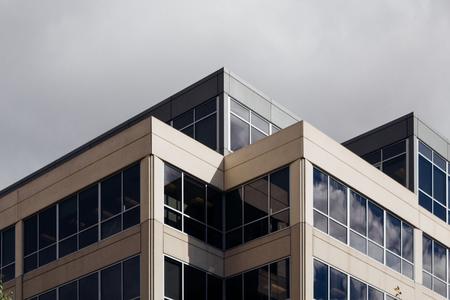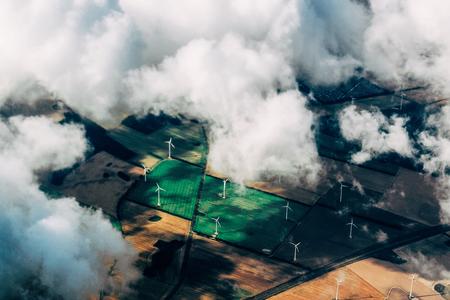Perhaps nothing defines modern human society so much as the buildings where we live and work. Given its importance, it’s no surprise that the built environment is globally responsible for 36% of energy consumption and nearly 40% of greenhouse gas emissions, according to the World Green Buildings Council.
About one-third of these emissions occur during the manufacture of building materials and the construction process (also called “embodied emissions”), while the other two-thirds result from a building’s operation and use.
Forward-thinking companies from across the built environment value chain are therefore stepping up to meet the climate challenge, from raw material manufacture, to construction, ownership, and facility operation and management.
Four such companies, JSW Cement, Landsec, Mitie, and Willmott Dixon, represent this diversity in sustainable leadership, as they are each members of all three of the Climate Group’s corporate 100s campaigns (RE100, EV100, and EP100) and have publicly committed to doing their part for the energy transition by investing in energy efficiency, switching to renewable electricity, and adopting electric vehicles.
While committing to all three of these demand-side campaigns may not be relevant or appropriate for every company’s specific operations, the Climate Group celebrates the leadership of companies like these who have embraced a holistic view of the energy transition and are “triple-joiners”[i] of RE100, EV100, and EP100. To date, only 18 companies globally are members of all three 100s commitments.
This is the second in a series of four blog posts profiling the successes and learnings of these triple-joiners. The first looked at the motivations for designing holistic climate strategies, while the next installments will highlight sustainable manufacturers and industrial operations, and the challenges such companies are facing as they set public targets and report transparently on their progress, as well as key learnings from their efforts.

“We believe in the power of commitment, in the power of cooperation and in the power of change. Equipping ourselves with these, we begin our fight against Climate Change. It’s 3 Cs against 2 – the odds are in our favor.”
“We believe in the power of commitment, in the power of cooperation and in the power of change. Equipping ourselves with these, we begin our fight against Climate Change. It’s 3 Cs against 2 – the odds are in our favor.”
Overall, more than 500 major global companies are actively reducing their emissions according to at least one of the three Climate Group commitments. Over 340 members of RE100 have pledged to power 100% of their operations with renewable electricity, representing over 350 TWhrs of annual electricity consumption. The EP100 campaign is a network of over 125 companies committed to improving their energy productivity. And in the EV100 campaign over 110 corporates have committed to transitioning more than 5 million vehicles and installing charging stations at more than 7,000 properties around the world.
Along with these three campaigns, the Climate Group is looking more closely at decarbonization for heavy industry and the built environment with the recently launched SteelZero and upcoming CementZero campaigns, which are likewise demand-side commitments to procuring zero-carbon steel and cement by 2050, with interim benchmarks and pledges along the way.
Properties, People, Planet
In April 2019, Landsec, along with NatWest Group, became the first company in the world to commit jointly to RE100, EP100, and EV100. As the UK’s largest commercial property development and investment company (Real Estate Investment Trust, or, REIT), Landsec recognizes that they have a significant role to play in addressing key global challenges, including not only combatting climate change, but also protecting scarce resources and addressing social inequalities.
Continuing the trend of looking beyond just their emissions and their bottom line, Mitie, the UK’s largest facilities management company, reflected similarly that their climate efforts are part of their wider responsibility to people, communities, and the environment. Willmott Dixon, a UK-based privately-owned contracting and interior fit-out group, is likewise committed to working in a sustainable and responsible way to shape the built environment and make a positive impact to society’s well-being. And finally, JSW Cement, India’s leading green cement company, guides their climate strategy with the aim of giving back to society above and beyond managing stakeholder expectations and profitability.
“With deep expertise in decarbonisation as a service, delivering energy optimisation and zero carbon solutions in commercial buildings and a footprint that covers thousands of sites across the UK, Mitie and other facilities management companies have the potential to drive the UK’s net zero commitment forward. We’re proud to be members of all three Climate Group campaigns and leading the way for our sector, driving down emissions not only for Mitie, but our hundreds of customers too.”
“With deep expertise in decarbonisation as a service, delivering energy optimisation and zero carbon solutions in commercial buildings and a footprint that covers thousands of sites across the UK, Mitie and other facilities management companies have the potential to drive the UK’s net zero commitment forward. We’re proud to be members of all three Climate Group campaigns and leading the way for our sector, driving down emissions not only for Mitie, but our hundreds of customers too.”
In speaking with the Climate Group about their experiences, all four companies highlighted the relationship of buildings to the communities where they are located, and particularly to the people who live and work within them. Low-carbon building design and operation will reduce the public health burden of air pollution, for example, and may otherwise contribute to human health and well-being. This relationship with tenants and even neighbors is top of mind for building owners, managers, and developers, and clearly influences their energy and climate strategies.

Membership Spanning Supply Chains
Every corporation has upstream and downstream relationships that contribute to the total emissions of their operations. The fact that the RE100, EP100, and EV100 campaigns include such diverse global members means that they encompass multiple nodes of key supply chains, with suppliers and buyers alike all following the same guidelines as to what credible climate action looks like for renewable electricity, energy efficiency, and electric vehicles, not to mention reporting publicly and transparently on progress toward their pledges.
This diversity along a value chain is illustrated in the case of the built environment by the four companies profiled here as triple-joiners: JSW Cement produces a key raw material, the likes of which might be used in construction by firms like Willmott Dixon, for buildings like those that might be owned by companies like Landsec, and managed in turn by actors like Mitie.[i]
These four companies all highlighted their commitment to working with customers and suppliers on climate, even though their 100s campaign pledges only cover their own operations. Landsec noted that 40% of their total energy consumption is energy used by their customers in building operation. They are therefore increasingly engaging their occupiers to understand their own sustainability ambitions and reduce carbon emissions collaboratively. Mitie has supported its customers to avoid 353,000 tonnes of GHG emissions over the past decade, 11x the emissions of Mitie itself.
All four companies likewise emphasized the importance of collaborating with external stakeholders and partners, and the value of membership in RE100, EP100, and EV100 in facilitating such collaboration. Willmott Dixon, who helps their customers maximize energy efficiency and renewable energy generation as part of their net zero carbon goal, shared that participating in the three 100s pledge campaigns raises the profile and adoption of best practice across different sectors and geographies, like those spanning their customer base.

Innovative Projects
The four companies profiled in this article each shared examples of some of the innovative programs they’ve launched as they pursue their targets under RE100, EP100, and EV100.
- JSW Cement utilizes waste byproducts (slag and fly ash) from steel and energy production to manufacture green cement. This material innovation reduces the energy requirements of cement production as well as the emissions from the chemical processes entailed therein. Their Vijayanagar plant won the 2021 Greentech Energy Conservation Award in recognition of its world-leading energy efficiency measures. And they are pushing the envelope on EV technology, historically dominated by light-duty cars, by ordering heavy-duty electric vehicles with 55 tonnes load capacity.
- Landsec is increasingly innovative in their approach to energy productivity, willing to make the additional investments of time, resource, and expertise required today to move beyond “low-hanging fruit” in building efficiency. For example, they are currently trialing AI technology in one of their buildings, to identify as-yet overlooked opportunities to drive energy reductions while also improving customers’ comfort levels. They’re also investigating solutions to work towards the holistic decarbonization of key building systems, such as the implementation of air source heat pumps powered by 100% renewable electricity.
- Mitie is a leader in sharing their sustainability expertise and learnings. They offer a free Plan Zero Playbook detailing their five-step A to E methodology, which allows any business to plan their decarbonization roadmap. They bolstered this thought leadership with the Zero Carbon for Zero Cost model, which helps businesses identify the decarbonization solutions best suited to their operations and that can be delivered at no cost, or potentially with financial savings. Finally, they launched a new partnership with Sustainable Development Capital LLP (SDCL) that will help both public and private sector organizations finance investments by providing the upfront costs of the low-carbon equipment and technology that Mitie has identified its customers will need to make their sites net zero.
- Willmott Dixon is on track to demonstrate the art of the possible to clients and policymakers, with their bold target of zero-carbon by 2030 – 20 years earlier than the goal set by their home market of the UK. They’ve set explicit targets to address both operational and embodied carbon in both new builds and refurbishments, and they’re actively working with partners to push the government for greater ambition. They’ve also launched capacity building programs to empower actors along their supply chain to pursue emission reductions themselves. Finally, they are going beyond mitigation and are already designing for future climate adaption, to ensure their buildings are resilient to the impacts of climate change we cannot prevent.
Overall, a key insight from speaking with these triple-joiners from the buildings sector is the degree to which improving energy efficiency is a foundational pillar of their climate and sustainability strategies, generating the cost savings that in turn unlock greater investment in renewable electricity and electric vehicles.
“I’m proud to be the first construction contractor and eleventh business in the world to join all three of the Climate Group’s initiatives. In our recent Now or Never sustainability strategy launch we committed that by 2030 we will be a zero-carbon company without any offsetting, and all new buildings and major refurbishments will achieve net zero operational carbon, 100% of projects will have maximum feasible renewable energy generation built in, and we will have a fully electric fleet. We will also draw on our experience and expertise to support our clients in switching to renewable energy and achieving their own net zero targets.”
“I’m proud to be the first construction contractor and eleventh business in the world to join all three of the Climate Group’s initiatives. In our recent Now or Never sustainability strategy launch we committed that by 2030 we will be a zero-carbon company without any offsetting, and all new buildings and major refurbishments will achieve net zero operational carbon, 100% of projects will have maximum feasible renewable energy generation built in, and we will have a fully electric fleet. We will also draw on our experience and expertise to support our clients in switching to renewable energy and achieving their own net zero targets.”
The 18 global companies who are members of the Climate Group’s RE100, EP100, and EV100 campaigns are pursuing holistic decarbonization via the mutually reinforcing technologies of renewable electricity, energy productivity, and electric vehicles.
The first post in this four-part blog series highlighted the leadership of triple-joiners AstraZeneca, Deloitte, Goldman Sachs, NatWest Group, and Lloyds Banking Group. The next article will spotlight the work of ABB, Danfoss, Schneider Electric, and Siemens as diverse manufacturers and industrial enterprises, and the final post will look across all of these companies at the shared challenges they’re facing and the best practices they’re learning through their participation in the campaigns.
“At Landsec we are proud to have been one of the first companies globally to join all three of the Climate Group’s RE100, EP100, and EV100 campaigns. Tackling the climate crisis cannot be achieved alone. Initiatives like these bring businesses together to make bold commitments and share knowledge and best practice in order to drive positive action.”
“At Landsec we are proud to have been one of the first companies globally to join all three of the Climate Group’s RE100, EP100, and EV100 campaigns. Tackling the climate crisis cannot be achieved alone. Initiatives like these bring businesses together to make bold commitments and share knowledge and best practice in order to drive positive action.”
Science indicates that the transition to renewable electricity and the switch to electric vehicles, both underpinned by significant investments in energy efficiency, must be nearly complete within the coming decade if the world is to avoid to worst impacts of the climate crisis.
With the built environment responsible for 40% of global greenhouse gas emissions, the corporations behind the construction, ownership, and operation of the world’s buildings are critical to achieving our climate goals, and strong engagement from the buildings sector across all the 100s campaigns is a sign of an industry committed to doing its part. RE100, EP100, and EV100 all allow leading companies to make ambitious public commitments to climate action and to report transparently on their progress, unlocking wider change in technology, capital flows, and policy frameworks, and accelerating the energy transition.
[i] At publication the 18 companies who are members of RE100, EP100, and EV100 include: ABB, AstraZeneca, Danfoss, Deloitte, Goldman Sachs, JSW Cement Limited, Landsec, Lloyds Banking Group, Mittie, NatWest Group, Schneider Electric, Siemens, and Willmott Dixon.
[i] This implies no actual supplier-buyer relationships between these four specific companies, but rather illustrates the different parts of the built environment sector they operate within.







